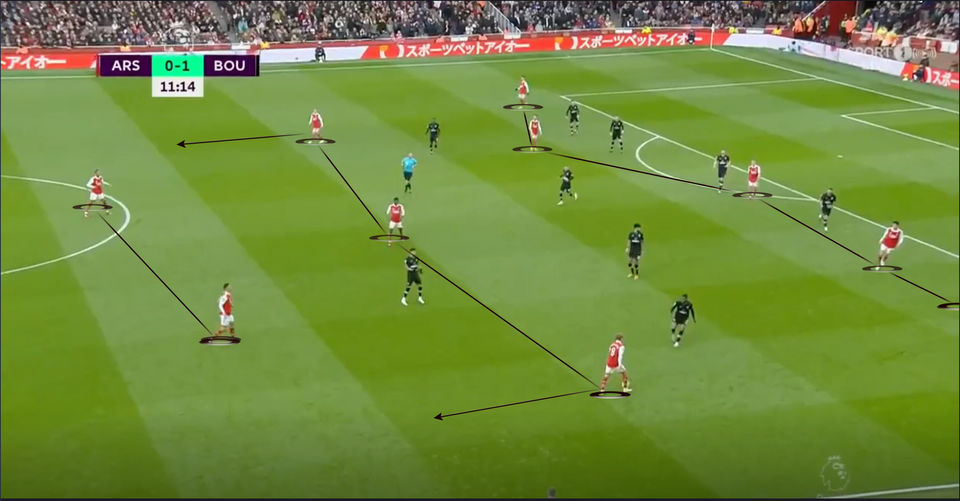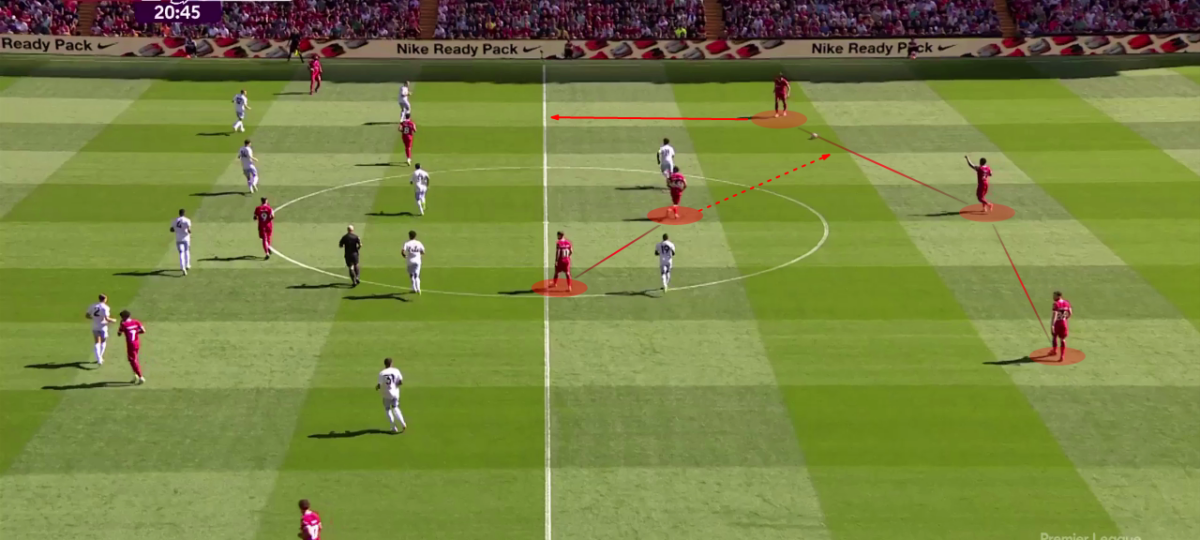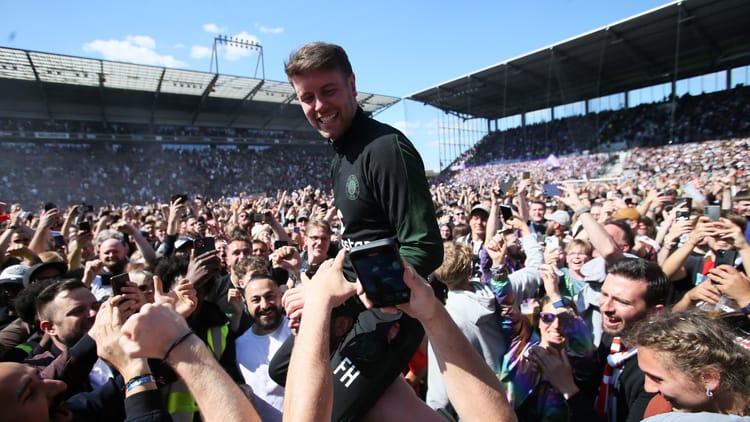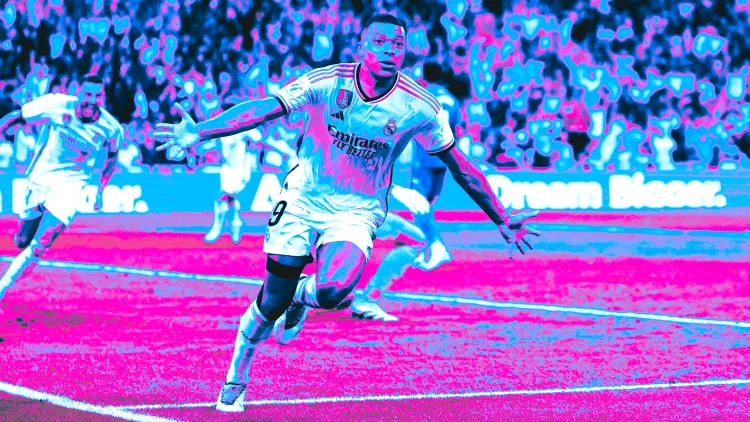What is rest defence in football and why do teams use it?

You may hear football managers, football podcasts, or even pundits talking about rest defence.
Football tactics are just essentially ideas of how to play the game of football, which can range from basic ideas like route one football, to more complex ideas like Pep Guardiola's positional play.
With tactics constantly advancing and evolving, there are always new ideas that get adopted more quickly due to the success that teams are having using them.
Rest defence is one of those tactical ideas, which began life largely in the Netherlands with Rinus Michels' "Total Football" philosophy in the 1970s.
Now, nearly all Premier League teams use a rest defence, but what actually is it and how does it help you win football games?
What is rest defence?
Rest defence is essentially the formation that the team takes up when in possession of the ball, which prepares the team defensively should the team lose possession.
It is called rest defence because quite literally the defenders arelying in wait, or resting, ready to pounce if the ball is turned over.
Whilst there are multiple formations and concepts of rest defence, the basic idea is to position plays on the pitch to recover the ball as quickly as possible and to reduce the threat from opposition counter-attacks.
What are the formations for a rest defence?
The most common rest defence formations are a 3-2 (3 defenders, 2 midfielders), or a 2-3.
Enzo Maresca uses a 2-3 rest defence formation, with Jürgen Klopp adopting a 3-2 formation.
In the example below, Liverpool, who are in possession of the ball, have a 3-2 rest defence formation in this phase of their build-up, meaning there are 3 defenders

What are the benefits of using a rest defence?
This defensive readiness using a rest defence when attacking allows teams to maintain control of a game.
The most important members of rest defence are those in and around the action area (near the ball), and those in the middle of the pitch, typically defenders and midfielders.
Rest defence is often associated with other football concepts such as counter-pressing, which is essentially swarming the ball when possession is lost in order to win the ball back as quickly as possible.
This approach helps in neutralising counter-attacks and regaining possession swiftly if the ball is lost.
Where did rest defence originate?
The concept of rest defence has roots in the tactical innovations of European football, particularly from the Netherlands and Germany. It is closely associated with the tactical nous brought by Dutch football's "Total Football" and the meticulous organisation seen in German football.
Influential Coaches and Systems
- Rinus Michels and Johan Cruyff: The Dutch masters, particularly during their tenure at Ajax and Barcelona, emphasised fluidity in movement and positional discipline, laying early foundations for concepts akin to rest defence.
- Pep Guardiola: At Barcelona and later Bayern Munich, Guardiola refined rest defence with his teams maintaining a high defensive line and pressing immediately upon losing the ball.
- Jurgen Klopp and the Gegenpressing System: Klopp’s approach at Borussia Dortmund and Liverpool further evolved rest defence, where immediate counter-pressing ensures defensive solidity even in attack.
What are the positions and player roles in rest defence?
- Defensive Line: Managers instruct full-backs and centre-backs to maintain a compact shape, often positioning them slightly deeper and more centrally when their team is in possession.
- Midfield screen: Defensive midfielders play a crucial role, often staying back or in a position to intercept counter-attacks. You may also see full-backs invert to become midfielders, which is another concept that was adapted to make Guardiola's rest defence formation stronger by gaining numerical superiority in midfield, nullifying the threat on the counter-attack.
- Attacking responsibility: Forwards and attacking midfielders may be tasked with immediate pressing once possession is lost, slowing down the opposition’s counter-attack
- Positional awareness: Players are drilled to be aware of their positioning, ensuring that they can quickly transition from attack to defence. This will depend on the manager's preference of where he wants players to stand based on their opponent's position, also known as positional play.
Examples in modern football:
- Manchester City under Pep Guardiola: City’s positional play ensures that while attacking, they remain compact and ready to press immediately upon losing the ball.
- Liverpool under Jurgen Klopp: Known for their high-intensity gegenpressing, Liverpool's forwards and midfielders immediately counter-press, disrupting the opponent’s transition.
Rest defence is a critical aspect of modern football tactics, ensuring that teams remain defensively robust even when attacking. Originating from the tactical evolutions in Dutch and German football, it has been refined by numerous managers to suit their strategic needs. By maintaining a balance between attack and defence, rest defence helps teams mitigate counter-attacks and regain control of the game swiftly.
If you want more in-depth football analysis and exclusive newsletters like this, consider becoming a part of our growing community of cultured football fans with our free and paid memberships.
Your support is vital to our ability to grow and improve our independent football newsroom.




Comments ()